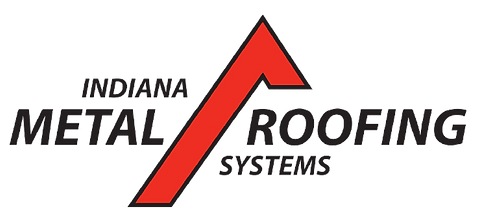A Complete Guide to Selecting the Best Metal Roof for Your Home
- Joseph Justice
- Mar 17
- 4 min read
Updated: Mar 26
Choosing the right metal roof is a critical decision that impacts both the appearance and protection of your home. With advancements in roofing technology, metal roofing has become one of the most durable and energy-efficient options for homeowners. If you're located in Fort Wayne, IN, Indiana Metal Roofing Systems offers top-tier metal roofing solutions that not only enhance curb appeal but also provide long-lasting protection.

Types of Metal Roofing Materials
The type of metal you choose for your roof can greatly influence its durability, cost, and appearance. Here are the most common metal roofing materials and their characteristics:
Steel Roofing: The most widely used metal roofing material. Steel is strong and durable but requires a protective coating to prevent rust. Opt for a thicker gauge (G-90) for better protection in harsh climates.
Aluminum Roofing: Lightweight and rust-resistant, aluminum is ideal for coastal homes where moisture levels are higher. However, it's softer than steel, making it more prone to dents.
Copper Roofing: Known for its striking appearance and longevity, copper develops a beautiful patina over time. Although expensive, it can last for centuries, outlasting many other roofing materials.
Zinc Roofing: Zinc is corrosion-resistant and environmentally friendly, making it a popular choice for sustainable homes. Like copper, it develops a natural patina that protects the metal over time.
Key Features to Look for in a Metal Roof
When selecting a metal roof, it’s essential to consider factors that impact performance, durability, and appearance. Here are some key features:
Self-Cleaning Valleys: Roof valleys can collect debris, leading to clogs and potential leaks. Look for metal roofing systems with self-cleaning valleys to minimize maintenance.
Quality Flashing: Proper flashing is essential around roof penetrations such as chimneys and vents. Poorly installed flashing can lead to leaks, so ensure your roofing contractor uses high-quality materials.
Ventilation: A well-ventilated roof is critical for preventing moisture buildup, reducing the risk of mold, and improving energy efficiency. Ensure your metal roof is designed to promote proper airflow.
Warranties: Check for comprehensive warranties that cover both materials and installation. A solid warranty is a good indicator of the product’s durability and the contractor’s confidence in their workmanship.
Fact Highlight: According to the Metal Roofing Alliance, metal roofs can last up to 50 years or more, which is 2-3 times longer than traditional asphalt roofs.
Popular Metal Roofing Designs
Metal roofing comes in a variety of designs, each offering a unique look and level of protection. Here are a few popular options:
Standing Seam Metal Roof: Known for its sleek, modern appearance, this design features raised seams that help channel water away from the roof, reducing the risk of leaks.
Corrugated Metal Roofing: A more affordable option with a classic wavy design, corrugated metal is great for both residential and commercial properties.
Metal Shingles: If you prefer the look of traditional shingles but want the durability of metal, metal shingles are a great alternative.
Each design offers different levels of protection and visual appeal. For a tailored recommendation, consider consulting with a roofing expert like Indiana Metal Roofing Systems to find the best design for your home.
Environmental Benefits of Metal Roofing
Metal roofing is one of the most eco-friendly options available today. Here are a few reasons why:
Recyclability: Metal roofing is made from recyclable materials and can be recycled at the end of its life. In fact, many metal roofs contain a high percentage of recycled content.
Energy Efficiency: Metal roofs reflect solar radiant heat, which can help reduce cooling costs by up to 25%. Many metal roofs also qualify for energy efficiency tax credits.
Sustainability: Metal roofs require fewer repairs and replacements, reducing waste over time. Additionally, some metal roofs are coated with reflective pigments that help reduce the "heat island" effect in urban areas.
FAQs
1. What is the best metal roofing material for coastal homes?Aluminum is the best option for coastal homes because it is naturally resistant to rust and corrosion.
2. How long does a metal roof typically last?Metal roofs can last 50 years or more with proper maintenance, making them one of the most durable roofing options.
3. Can metal roofs reduce energy costs?Yes, metal roofs reflect solar heat, which can significantly lower cooling costs, especially in warm climates.
4. Is a metal roof a good investment for my home?Absolutely. Metal roofs offer superior durability, energy efficiency, and a high return on investment when compared to traditional roofing materials.
5. Do metal roofs require special maintenance?Metal roofs are low maintenance, but it’s important to regularly clean gutters, inspect flashing, and check for debris in roof valleys.
Conclusion
Choosing the right metal roof can provide long-term benefits in terms of durability, energy efficiency, and aesthetic appeal. Whether you're replacing your old roof or installing a new one, Indiana Metal Roofing Systems offers expert guidance and high-quality materials to help you find the best solution for your home.
Read more about: Identifying Vulnerable Areas on Your Roof for Better Protection


Comments